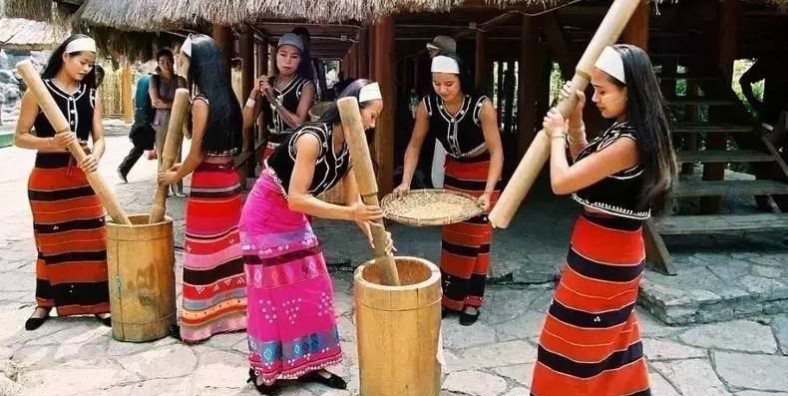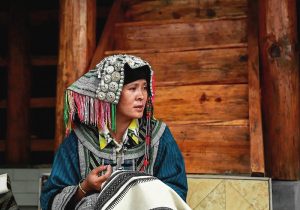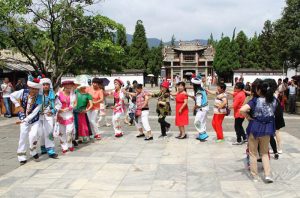
6 Days Yunnan Minority Craft Culture Tour

Tour Overview
In our modern life, the things related to hand work are disappearing. More and more things are formatted and standardized. The objects we use lack the variety and uniqueness...
Length of Travel: 6 Day
Destinations of Tour: Yanshan County of Wenshan-Maguan County-Malipo County-Guangnan County-Kunming
Departure City: Wenshan
Price of Tour: Request
Type of Tour:
Features of Tour:
In our modern life, the things related to hand work are disappearing. More and more things are formatted and standardized. The objects we use lack the variety and uniqueness of manual production. In fact, the handcrafts in Yunnan are mostly interesting and even full of legends due to the differences of ethnic customs, history and culture. The handcrafts here are not only pretty, but also sweet, colorful and amusing. This trip will explore and learn about the handcrafts and craftsman in Yunnan, which still exist now, but are disappearing.
Highlights:
- Learn ethnic culture and featured craft culture.
- Experience the handcrafts-making.
Brief Itinerary:
- Day 1 Arrive in Wenshan
- Day 2 Yanshan County-Maguan County
- Day 3 Maguan County-Malipo County
- Day 4 Malipo County-Guangnan County
- Day 5 Guangnan County-Kunming
- Day 6 Departure from Kunming
Google Map
Detailed Itinerary
Day 1 Arrive in Wenshan
Sightseeing and Activities: Arrive in Wenshan
Accommodation: Wenshan
Meals: Lunch
Today, you will arrive in Kunming first and then change another flight to Wenshan by yourself. Our tour guide and driver will meet you in Wenshan airport. Then drive to hotel.
Day 2 Yanshan County-Maguan County
Sightseeing and Activities: Zhuang ethnic woodblock print
Accommodation: Maguan County
Meals: Breakfast, Lunch
Get up in the early morning. Our car will pick you up and drive about 4 hours from Puzhehei to A’E Xinzhai Village of Maguan County(马关县阿峨新寨村). Visit the masters of Zhuang ethnic woodblock print. You can also visit their workshop and watch how they make the woodblock print.
-Yunnan’s A’e Xinzhai Village of Maguan County houses an area well-known for its diverse and beautiful traditional woodblock prints. These prints are made by male farmers from the Zhuang ethnic minority group. In Zhuang culture, men have traditionally produced prints while women have focused on producing elaborate embroidery work. Much of their work was done in obscurity; then in 1975, the male farmers once again began to pick up woodblock print making techniques. The woodblock prints nowadays depict agricultural scenes, the daily lives of the Zhuang people, and provide travellers with a glimpse of their traditions and customs. After 30 years of perfecting these skills, the village now boasts three generations of print making farmers. Many males in the village from old to young now participate in this activity, and there is even a 250 meter-long painting near the entrance of the village that depicts dragon worship, and depicts the daily customs of the Zhuang group. There are over 17 million Zhuang People that live in China, making it the second largest ethnic minority group in China. The majority of Zhuang people live in Guangxi and Yunnan. So if you are traveling around the area, you should consider heading to a Zhuang village to take a look around.
Day 3 Maguan County-Malipo County
Sightseeing and Activities: Chengzhai Village
Accommodation: Malipo County
Meals: Breakfast, Lunch

Drive about 6 hours from A’E Xinzhai Village to Chengzhai Bailuo Ethnic Village of Donggan Town in Malipo County(麻栗坡县董干镇城寨白倮族村). You can have some stops if you are interested in the villages on the way to your destination. After arrival, visit Chengzhai Village. You can see many villagers wearing their ethnic costume.
–Bailuo, a branch of the Yi ethnic group, have called Chengzhai home for several hundred years. Comparing to other Yi ethnic branches, the Bailuo members differ a lot as far as their clothing, dietary habits and dwellings are concerned. Due to their quaint costumes, exotic culture and distinctive Ganlan (stilted houses) architectures, Bailuo people have aroused great attention. Enriched by the ethnic culture, the batik craft highlights the culture of the Bailuo people who are traditionally adept at making quaint, elegant costumes on their own. Carrying modern aesthetic elements, and with delicate workmanship, it has brought great visual impacts one can’t help marveling at.
Day 4 Malipo County-Guangnan County
Sightseeing and Activities: loom weaving and batik of Bailuo ethnic, Zhuang embroidery and Zhuang Brocade
Accommodation: Guangnan County
Meals: Breakfast, Lunch
Today, you will visit the masters of loom weaving and batik of Bailuo ethnic in Chengzhai Village. After that, drive about 4 hours to Guangnan County. You will visit the masters of Zhuang ethnic embroidery and brocade in Liancheng Town of Guangnan County(广南县莲城镇).
-Zhuang embroidery is mainly used for decorating dresses, and also for strap, curtain, sheet, etc. The embroidered ball which delivers amorous affection between man and woman is the most ethnic art work that represents Zhuang nationality. The main embroidery patterns are lotus, kylin, gourds, flowers and other auspicious patterns such as longevity.
Zhuang Brocade is one of the four famous Chinese brocades (the other three are: Yun Brocade from Nanjing, Shu Brocade from Sichuan Province, and Song Brocade from Suzhou). This splendid handicraft was originated in the Song Dynasty (960 – 1276 AD). They are woven with cotton, silk or flax threads into colorful patterns. Images of flowers, plants and animals are mostly adopted. The Brocade is very durable, and is widely used in making quilt covers, handbags, aprons, table-cloth, scarves, wall hangings, cushions, etc.
Day 5 Guangnan County-Kunming
Sightseeing and Activities: Yunnan Ethnic Villages, Miao ethnic embroidery
Accommodation: Kunming
Meals: Breakfast, Lunch

This morning, drive to the high-speed railway station in Guangnan County. Depart from Guannan.
You will arrive in Kunming one and half an hour later. The driver will pick you up and take you to Yunnan Ethnic Villages. In this theme park, you will visit a master of Miao ethnic embroidery.
-The Miao are among the larger ethnic populations in China. They also live in neighboring countries as well as in the United States and Australia, where they are more generally known as the Hmong. In China, they are mostly concentrated in Guizhou Province and Yunnan Province in the southwest, where subgroups are identified by their dress and embroidery motifs, such as “Big Flower Miao” and “Small Flower Miao.” Working with silk and cotton thread, as well as horsehair, embroiderers adorn cuffs, sleeves, collars, and tunic fronts with designs of mythical animals (dragons and phoenixes) and ordinary insects, fish, and flowers. These designs are not only decorative; more importantly, many record daily life, life cycle events, and community legends and history.
Day 6 Departure from Kunming
Sightseeing and Activities:Departure from Kunming
Accommodation:
Meals: Breakfast
Today, drive to the airport and you will finish your ethnic craft culture tour in Yunnan.
Recommended Hotels
| Destination | 5 Star | 4 Star | 3 Star | Hostels |
| Kunming | Sofitel Hotel | Kunming Jinjiang Hotel | Kunming Longteng Hotel | T&T Story Hotel |
| Maguan County | / | / | Runyuan Hotel | Local Guesthouse |
| Malipo County | / | / | / | Local Guesthouse |
| Guangnan County | / | Guangnan Babaogong Hotel | Yuehai Hotel | Bamei Dibei Guiyuan Hotel |
Service Included:
- Admission fees for all of the sightseeing spots listed in the itinerary;
- Meals as listed in the itinerary;
- Hotels as listed in the itinerary;
- Private English-speaking tour guide;
- Private vehicle for transfers & sightseeing with skilled driver;
- Service charge & government taxes;
- Luggage transfers between airports and hotels;
- Domestic train tickets of soft sleeper;
- Two bottles of mineral water each day.
Service Excluded:
- Any arrival and departure international airfares or train tickets;
- Chinese visa fees;
- Excess baggage charged by Airlines;
- Single room supplement;
- Tips to guides and drivers;
- Personal expenses and gratuities to service staff;
- Personal travel accident insurance;
- All optional programs.
Travel Tips:
- Visitors are advised to always carry changes of clothing due to the large variations in temperature between day and night.
- The climate is relatively dry, so drink more water every day.
- Protecting oneself from strong UV radiation at high altitude.
- Protecting oneself from altitude sickness. Lessen the effects of altitude sickness, avoid strenuous exercise and have plenty of rest.
- Respect local customs , habits, and religious beliefs.
- When take photos, please pay attention to your safety, do not shoot in dangerous areas.

 7 Days GolfingTour
7 Days GolfingTour
 8 Days Group Tour
8 Days Group Tour
 8 Days Yunnan Tour
8 Days Yunnan Tour
 7 Days Shangri La Hiking
7 Days Shangri La Hiking
 11 Days Yunnan Tour
11 Days Yunnan Tour
 6 Days Yuanyang Terraces
6 Days Yuanyang Terraces
 11 Days Yunnan Tour
11 Days Yunnan Tour
 8 Days South Yunnan
8 Days South Yunnan
 7 Days Tea Tour
7 Days Tea Tour
 8 Days Muslim Tour
8 Days Muslim Tour
 12 Days Self-Driving
12 Days Self-Driving
 4 Days Haba Climbing
4 Days Haba Climbing
 Tiger Leaping Gorge
Tiger Leaping Gorge
 Stone Forest
Stone Forest
 Yunnan-Tibet
Yunnan-Tibet
 Hani Rice Terraces
Hani Rice Terraces
 Kunming
Kunming
 Lijiang
Lijiang
 Shangri-la
Shangri-la
 Dali
Dali
 XishuangBanna
XishuangBanna
 Honghe
Honghe
 Kunming
Kunming
 Lijiang
Lijiang
 Shangri-la
Shangri-la
 Yuanyang Rice Terraces
Yuanyang Rice Terraces
 Nujiang
Nujiang
 XishuangBanna
XishuangBanna
 Spring City Golf
Spring City Golf
 Snow Mountain Golf
Snow Mountain Golf
 Stone Mountain Golf
Stone Mountain Golf

















